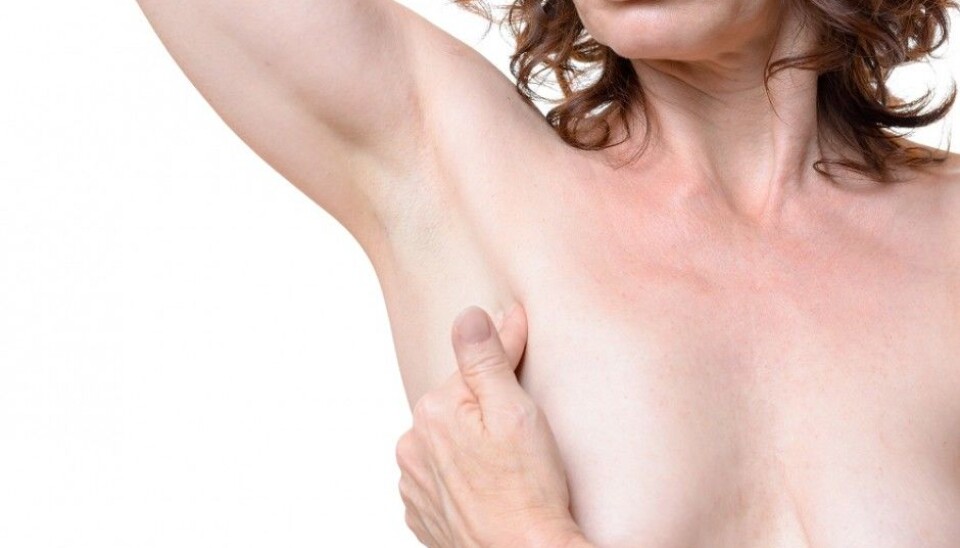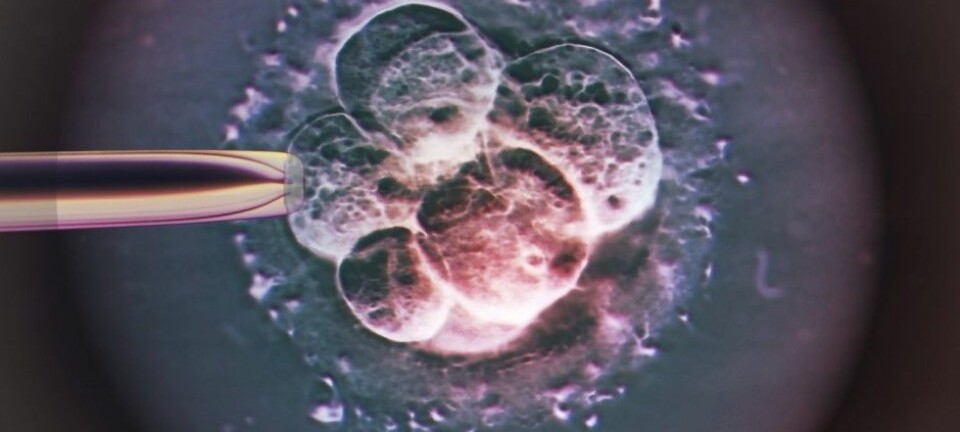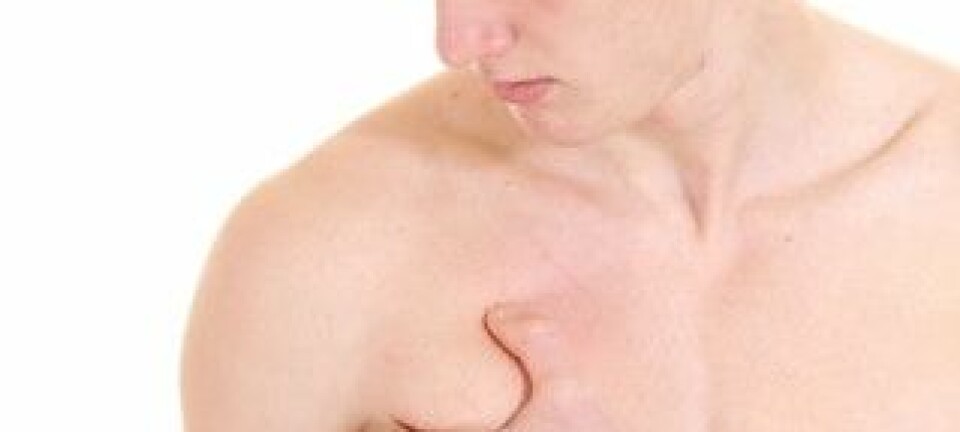
Ten risk factors for breast cancer
Age, number of births, breast-feeding and lifestyles have impacts on the risk of getting breast cancer. But the density of breast tissue also plays a heavy role.
Every year upwards of 3,400 Norwegian women are diagnosed with breast cancer. This should be seen against Norway’s total population – women, men and children – of 5.3 million. Eight in every hundred Norwegian women can expect to contract breast cancer by the age of 75. Nine out of ten are still alive five years after the diagnosis and eight in ten survive 15 years after the diagnosis.
Which women are at the highest risk of breast cancer? What can be done to reduce risks? These were themes of recent talks at a mammography seminar hosted by the Cancer Registry of Norway in Oslo.
Genetic disposition and lifestyle, childbirths and breast-feeding are factors at play, either in raising or mitigating risks of breast cancer.
Many are aware of that, but fewer know that the density of breasts plays a large role.
10 risk factors:
- Breast density
- Age
- Genes
- Hormone treatment
- Obesity
- Smoking
- Alcohol
- Little physical activity
- Childlessness
- Not having breast-fed
Dense breasts raise the risk
“Women with higher density breast tissue run a higher risk of developing breast cancer,” said Director Giske Ursin of the Cancer Registry of Norway in her lecture at the seminar.
The ratios between fat, mammary glands and fibrous tissue in the breasts determine whether they are dense, and thus affect the risks. Dense breasts have lots of tissue, or collagen, and little fat.
Women with the densest breasts run four to six times the risk of breast cancer as compared to women whose breasts are mostly comprised of fatty tissue.
The denser the breasts, the higher the risk of developing breast cancer.
Mammographic density is one of the strongest individual factors for predicting the risk of breast cancer.
Most women lose breast density as they age.
Medical scientists have conducted studies of twins which make them think there is a strong genetic factor determining breast density. But environmental factors also raise breast density to a certain extent.
“We see that women who use hormone drugs after reaching menopause have denser breasts on average than other women their age,” says Ursin.
This can in turn be the reason why women using the combination of oestrogen and progestin run higher risks of breast cancer.
Combined hormone medications can raise the risk up to 2.7 times.
Larger breasts not likely to add to risk
Can women determine on their own whether they have dense or non-dense breast tissue?
“No, this is primarily a density in the breast tissue that has to be seen in mammography images,” explains Ursin.
This is not something that should alarm young women with firm, compact breasts.
The risk increases right before or after menopause.
Does the size of breasts have any effect on the risk of breast cancer?
One might reason that large breasts have more breast tissue, which is where the cancer starts.
“We often see that there is more fatty tissue in large breasts, which means a lower mammographic density,” explained Ursin to forskning.no, ScienceNordic.com’s Norwegian partner after the lecture.
Density should be used in screening
“As women are not summoned to a mammography until the age of 50, we primarily see the risk based on higher density among women age 50 and up,” says Ursin.
On mammographic images fat is seen as dark or clear areas whereas the denser mammary glands and fibrous tissue appears as light regions.
An estimated 20 percent of women before menopause and 10 percent after menopause have a mammographic density of over 50 percent.
Researchers have estimated that about one-third of all breast cancer cases can be explained by high mammographic density.
Ursin thinks that the density of breast tissue has a strong potential for use as a biomarker in screening programmes such as mammography.
“It is also harder to detect tumours in women with higher density breasts,” she said.
Women in the USA who have been seen to have high-density breasts in mammography are notified by mail so that they can be followed up, based on their elevated risk.
“Some can be offered an ultrasound as a follow-up because this is more effective at finding tumours,” says Ursin.
Ultrasound is used in Norway in follow-up examinations, but not as a screening method.
Age is the greatest risk factor
Advanced age still represents the greatest risk factor for breast cancer, said Ursin in her talk.
Breast cancer rates rise significantly with a woman’s age.
“Women over 50 have ten times the risk as women in their 30s,” said Ursin.
She urges all women over 50 to have a mammography.
Every year in Norway at least 100 women’s lives are spared by early detection of breast tumours. Those who participate in screening run a 40 percent lower mortality rate from breast cancer than women with tumours diagnosed by other means.
That means that compared with any ten women who have discovered breast cancer by other ways and who die from the disease, there are four women with breast cancer discovered by mammography who are still alive.
The genetic factor
Heritage is big player, for better or worse. An array of common gene variants has been linked to a slight rise in the risk of breast cancer.
“However, the risk connected with each variant is very low. There are about 100 known variants,” said Ursin.
As many are aware, certain families are more highly disposed to contracting breast cancer. This is because of the gene variants which are strong indicators of an elevated breast cancer risk.
The best known of these is designated as BRCA1, which gives a very high risk of breast cancer. A couple other variants also signal a moderately elevated risk.
Higher risk after pregnancy
Women who have never had children or breast-fed a baby run higher risks. The chances of breast cancer diminish with the number of children a woman has had and with nursing a child or children for lengthier periods before weaning them.
“But pregnancy raises the risk of breast cancer temporarily, and it appears to remain that way for a few years,” said Ursin.
The risk rises the older a woman is when she gets pregnant.
The risk of breast cancer drops off a few years after the pregnancy but the reduction is greatest for women who start having children early. In general, the more children a woman has the more the risk declines.
“But not many would want to have eight children on those grounds,” said Giske Ursin, to the amusement of the audience.
How about lifestyle?
Lifestyle factors such as obesity, levels of physical activity, smoking and alcohol use can also affect the risk of breast cancer.
But neither high body-mass index (BMI), alcohol nor activity are very large risk factors.
“A rise in weight elevates the risk a bit, as does alcohol consumption, but neither of these is a very high risk factor,” said Ursin.
Increased physical activity, however, reduces the risk by ten percent.
More frequent screenings according to risk?
Not many of these risk factors are currently used to select the women who are most vulnerable.
“The question is whether we can use a combination of risk factors to screen vulnerable women more frequently and the less vulnerable women less frequently,” said Ursin.
This appears to be rather difficult. Age is already used, as Norwegian women over the age of 50 are requested to take a mammography.
“Genetics are used partly but potentially could be used more. In the future, this could be used together with information on mammographic density and other risk factors.
Breast density is hard to determine precisely in an automated way and attention has to be paid to changes found in women who start with hormone treatments after the first screening. But this can clearly play a role in the future, concluded Ursin.
-------------------------------------
Read the Norwegian version of this article at forskning.no
Translated by: Glenn Ostling






